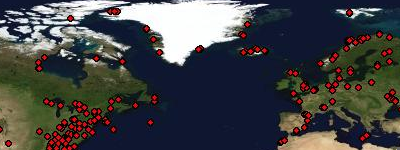The
post on the interaction paper that I found peculiar due its stress on the "first analysis" received several comments by email and verbally. Several of them were rather disappointed with the paper in general and stressed that the body of interactions used for inferences was very small and that little novelty was described in general. However, I find nothing "wrong" with the paper and if the editors find it interesting, why shouldn't they publish it?
A similar paper by
Zhong and Sternberg in Science this Friday might receive the same criticism - much of it has been seen previously in other organisms, there is little novelty in the methodology. The authors integrate transcription data and interaction data from several organisms and provide experimental evidence for their prediction. The approach is not different from strategies employed by in the
String database (Disclaimer: done by my former lab) or work from
Lee et al. that also appeared in Science and several others. One might want to comment on the lack of references but given the severe restrictions by the journals it is problematic to select the right ones.
Further in defense of it: The work by Zhong and Sternberg might not seem to be novel in the eyes of the pundits but it is probably of considerable interest for the
C. elegans community.
Other memes that often go around with papers from your core expertise in prestigious journals: "This work should not be in Nature Genetics" and "I wonder how it got into Science". Maybe I am just getting older but I relax and think that if these works are accepted, my work has a better chance of getting published too. At the end of the day, good work is recognized in your field even if it is not published in Cell. There are just less people jealous people commenting - is that a bad thing?
Or as a collaborator recently put it: You can get away with publishing good work in mediocre journals but not publishing mediocre work. Focus on your work, not the impact factor accrued by other scientists.
[Note to self: Re-read every Friday until you really believe it]



